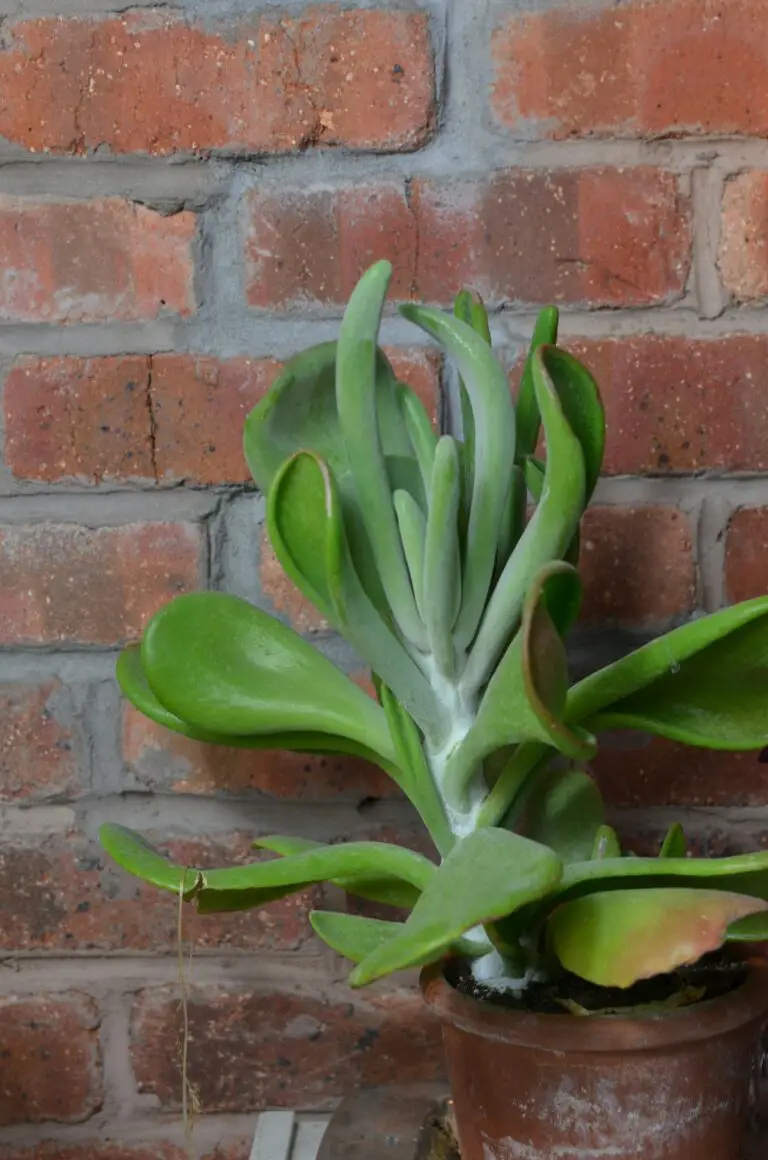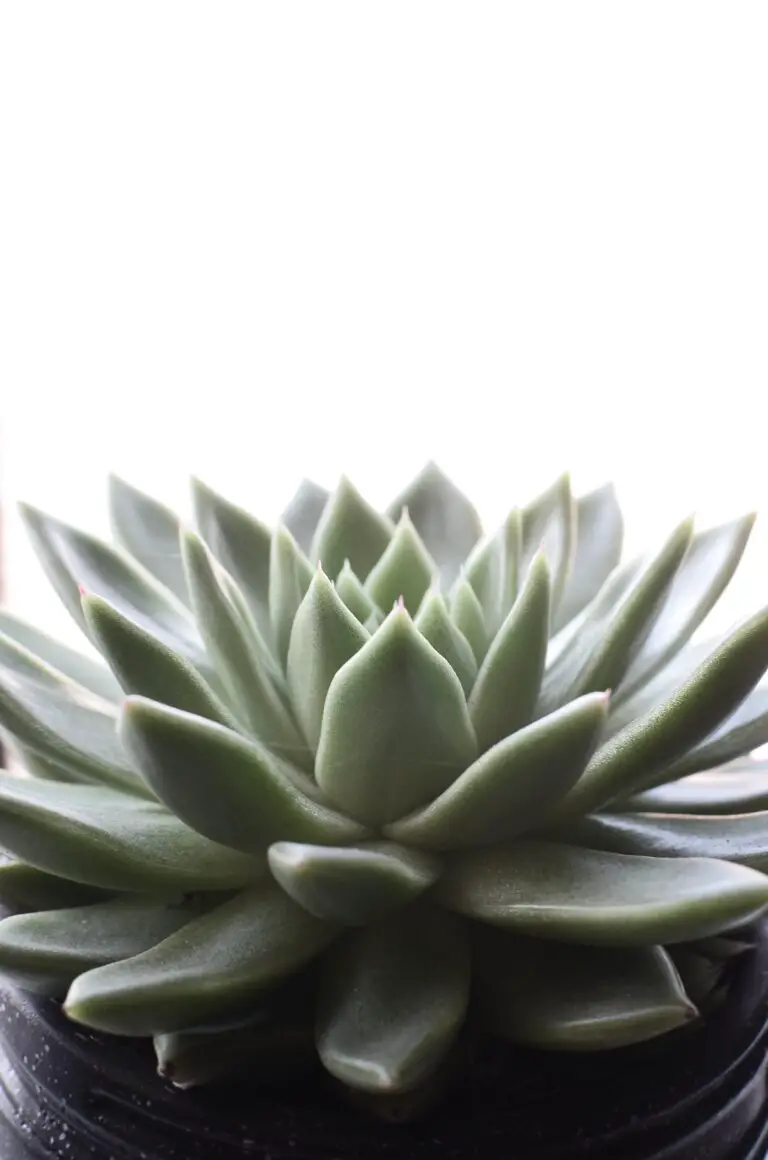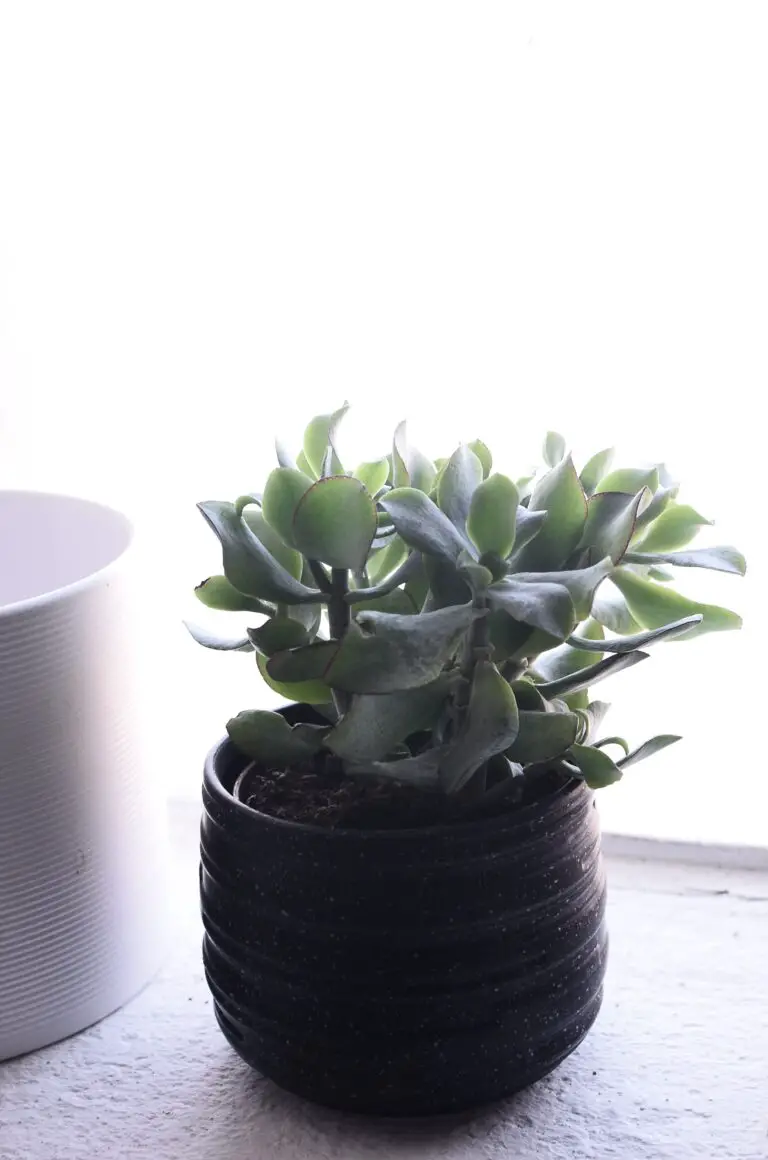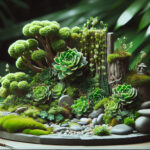Understanding the Crassula Species
Embark on a delightful journey through the diverse world of Crassula plants, where these succulent wonders captivate enthusiasts with their robust versatility and elegant simplicity. Native to many parts of the globe including South Africa, these fleshy friends display a remarkable adaptability that allows them to flourish in a variety of environments.
Imagine a wide array of Crassula species, each with their unique charm, awaiting your discovery. Their beauty lies not just in their geometric leaves but also in their resilience; for instance, the Crassula ovata, commonly known as the Jade plant, impresses with its tree-like stature and glossy, coin-shaped leaves. Discover the art of caring for these living sculptures and enhance your living space with a touch of green sophistication.
One can’t help but be intrigued by the sheer popularity of Crassulas. They offer an unmatched ease of care, making them the ideal choice for both seasoned collectors and first-time plant parents. Whether basking in a sun-drenched nook or nestled among other potted treasures, Crassulas are true survivors, enduring where lesser plants may falter. To delve deeper into succulent care mastery, explore our insights on fostering a flourishing succulent garden.
Here’s a snapshot of what makes these succulents so special:
Dive into the captivating experience of growing Crassulas and you will find that these botanical buddies are more than plants; they’re a lifestyle. Whether it’s the orbicular Crassula perforata or the cascading Crassula muscosa, each brings its own story to your indoor oasis. It’s no wonder that the Crassula genus is celebrated among novices and horticulturalists alike for its remarkable diversity and stunning aesthetic appeal.
Identifying the Crassula Plant
Ever encountered a plant that seemed to have an almost otherworldly charm, with leaves so lushly plump and stems so sturdy they seem to celebrate life itself? That’s the Crassula for you, a fascinating member of the succulent family — a true survivor in the plant kingdom. Natural wonders that they are, recognizing these plants is more than just a botanical exercise, it’s a step into a world of resilience and beauty.
Crassulas have a certain gusto in their appearance, identifiable by their fleshy, water-storing leaves, which range from deep jade green to sometimes having red-tinted edges, as if kissed by the sun. Picture the Crassula as the plump, contented Buddha of the plant world, calmly meditating in sun-soaked spots. The leaves may be smooth, hairy, or even tubular, but what they all share is a succulence that is visually appealing and practically drought resistant. Their stout stems serve as a robust foundation, supporting clusters of leaves and conveying a sense of rugged elegance.
The beauty of the Crassula lies not just in its individual leaves and stems, but also in its varied growth patterns. Some species proudly stand upright, reaching towards the sky, while others sprawl casually over the edges of pots like verdant waterfalls. They could be mistaken for static entities, but they’re anything but — Crassulas are dynamic, adapting their shape and size to their environmental conditions, reminding us of nature’s incredible ability to endure and prosper.
An example that comes to mind is the ‘Crassula ovata’, commonly known as the Jade Plant or Money Tree. Often found gracing sunny windowsills, this Crassula variant is a popular indoor companion, promising good fortune and with a reputation for being almost indestructibly patient with forgetful waterers. The common thread that unites the Crassula genus is their tenacity, a trait that encourages even the most novice of green thumbs to attempt caring for these verdant marvels.
Now, if you’re keen on getting to know these succulents even better, a visual can make all the difference. So let’s take a moment to watch this informative video that will help us appreciate the full splendor of the Crassula genus.
The Best Growing Conditions for Your Crassula
So, you’re the proud owner of a Crassula plant, or perhaps you’re just Crassula-curious. Either way, you’ve come to the right place! Known for their ease of care, succulents like Crassula are often beloved by both gardening newbies and the green-thumbed gurus. But to keep them looking their best, there are a few key conditions to master. Let’s dive in!
Luminous Light: Crassula’s Solar Embrace
Imagine a sun-kissed Mediterranean coastline. That’s precisely the kind of light your Crassula is dreaming of—bright and cheerful. Position your plant where it can soak up the sun for at least four to six hours each day. Indoor Crassulas will thrive near a south-facing window, where the light is plentiful. But don’t get too sun-happy; an outdoor Crassula that’s not used to intense light can sunburn, just like us! Start with dappled sunlight and gradually increase exposure.
Temperature Temptations: Balancing Warmth and Cool
Your Crassula isn’t just a pretty face; it’s a tough cookie, adapting to typical indoor temperatures with ease. However, it does enjoy a range of 60-75°F (15-24°C)—not too hot, not too cold. Think of it as Goldilocks’s preferred climate. When outdoors, remember to bring your plant friend inside before the first frost, as cold weather is the kryptonite to your Crassula’s superpowers.
Humidity Harmony: Keeping It Just Right
A desert-dweller at heart, the Crassula plant doesn’t crave that tropical, humid air. In fact, it’s quite the opposite. These succulents prefer low humidity environments, making them perfect companions for dryer areas of your home. If you’re living in a particularly moist climate, consider using a dehumidifier or placing your plant in a well-ventilated space to prevent moisture-related woes.
Now that you’re equipped with this knowledge, your Crassula is destined for greatness—or at least a happy, healthy growth spurt! Remember, when it comes to Crassula care, think Mediterranean: plenty of light, a comfortable middle-ground temperature, and a dry, breezy feel. With these tips, your Crassula will be on its way to being the triumphant succulent it was born to be!
Expert Tips for Watering and Fertilizing Crassula
When it comes to your Crassula plant—commonly known as the ‘Jade Plant’ or ‘Money Plant’—there’s much more than meets the eye. Let’s dive into the essentials of hydration and nourishment for these charming succulents. The key is understanding their unique needs, which are quite different from your average houseplant. And don’t worry, it’s not rocket science; it’s about the right amount of love in the form of water and nutrients!
The Perfect Thirst-Quencher for Your Crassula
Imagine this: the sun is beating down in the arid plains of Africa, and amidst the dryness, a Crassula stands resilient, its leaves plump with stored water. That’s their superpower—they are designed to thrive in dry conditions. When you’re watering your Crassula at home, think ‘drench then dry.’ Give it a good drink, letting excess water drain away, and then wait. Water only when the soil feels Sahara-desert dry. Overwatering? That’s the silent killer lurking in your watering can.
Fertilizing: A Mystery Solved
Now, let’s get to the bottom of the fertilizer conundrum. Crassulas aren’t picky eaters. They’re content with a mild fertilizer solution, but only during the growing season. Remember, a little goes a long way! Use a balanced water-soluble fertilizer, diluted to half the strength recommended on the package. Administer this liquid elixir once every four to six weeks, and you’ll witness your Crassula perform a growth spurt worthy of a standing ovation.
Check out the embedded video below for visual tips and tricks on watering and fertilizing these fascinating plants. Watch, learn, and become the Crassula whisperer you were meant to be!
Remember, tending to Crassula is like caring for a mini ecosystem. The delicate balance between moisture and nutrition is crucial. Arm yourself with these expert tips, and you’ll soon be the go-to guru for friends and family looking to make their Crassula plants not just survive, but truly thrive.
Maximizing Growth: Soil and Potting Advice
Imagine a thriving oasis of Crassula plants, each bursting with vibrant green vitality. The secret to this picture-perfect scene lies in the art of choosing the right soil mix and pot—a cornerstone of Crassula care that can’t be overlooked.
What is Crassula plant soil, you ask? It’s more than just dirt; it’s a carefully crafted foundation, teeming with potential, ready to cradle these succulents to greatness. To transform your Crassula from a mere plant to a statement piece of nature’s artistry, let’s talk soil.
A top-notch soil mix for Crassula plants strays from the beaten path. It should drain faster than a sink during a storm, yet retain just enough moisture to quench the thirst of these succulent beauties. Achieving this balance is like being a magician of the earth—blend equal parts of a standard potting mix with gritty sand or perlite, and voilà, you’ve concocted the perfect medium for growth.

Now, let’s move onto the unsung hero of the plant world: the pot. Ponder this—an exquisite, handcrafted clay pot, customized for your what is Crassula plant, put on a pedestal like the crown jewel it is. But aesthetics aside, your pot needs to have holes. Yes, holes! These aren’t just there for their looks; they serve the noble purpose of letting excess water escape, preventing the dreaded fate of root rot.
Think of your pot like a cozy, yet spacious home for your Crassula. Size matters, my friend. Too large, and the soil retains more water than the Sahara needs; too small, and your plant becomes the prisoner of its own home. Striking the right balance is key—it’s about empowerment, giving your Crassula the space to stretch its roots while ensuring it doesn’t drown in its own success.
Incorporating real-life examples, picture this: A grower once told me about their “Plant of Perseverance.” It was a Crassula, once dwindling, turned lush and thriving, all because they fine-tuned their soil mix and matched it with a pot that provided just the right amount of breathing room. Their Crassula became the talk of the town—or at least the talk of their plant-loving friends.
To sum it up, think of your Crassula’s soil and pot as the canvas and frame for a masterpiece. Choose wisely, and watch as your succulent grows robust and full of life, a living testament to your green-thumbed skills. Remember, it’s not just potting—it’s the gateway to a thriving Crassula paradise.
Propagating Crassula: A Step-by-Step Guide
If you’re a fan of succulents, you’ve likely admired the Crassula plant with its lush, plump leaves that seem to thrive with minimal fuss. But what if I told you that you could have an army of these little warriors with just a leaf or cutting from an existing plant? Let’s dive into the world of Crassula propagation and multiply your greenery!
First off, you don’t need a green thumb to succeed; mother nature has done most of the heavy lifting for us. Imagine this: you’re sitting on your porch, and there’s a fallen leaf from your prized Crassula. Instead of tossing it, you realize that this leaf is the ticket to a new plant. That’s exactly how simple Crassula propagation can be – a single leaf can spring to life, giving you a whole new plant to cherish.

To begin, gently pluck a healthy leaf from your Crassula plant or use a clean, sharp pair of scissors to take a cutting. If you’re using a leaf, make sure it’s a clean pull, leaving no part of the leaf on the stem. This ensures that the leaf has all it needs to start a new life. Now, lay the leaf or cutting onto dry succulent soil and resist the urge to water. This part is crucial, as wet soil can cause the leaf or cutting to rot before it’s had the chance to callus and root. Give it a week or so, and you’ll notice a callus forming over the cut area.
Now comes the magic show! Soon, tiny roots will begin to reach down into the soil, and a miniature Crassula will start to take shape at the base of the leaf or cutting. This mini-me will draw nutrients from the mother leaf, diligently growing until it becomes a self-sufficient plant. Remember to introduce water gradually – imagine a light mist from a coastal fog rolling in, not a torrential downpour.
Think of it like nurturing a child. You provide the essentials – proper light, a little bit of water, and a watchful eye. Over time, your efforts pay off as you watch your propagations flourish, sprouting new growth. It’s a rewarding experience that not only connects you with the cycle of life but also grows your indoor garden.
Whether you’re propagating for the first time or looking to add to your succulent sanctuary, the propagation of Crassulas offers a delightful pastime with the promise of tiny green rewards. So, grab a leaf and let’s get growing!
Common Pests and Problems with Crassula Plants
When we talk about the adorably chunky and resilient Crassula plants, it’s not all about their plump leaves and charming presence on your windowsills. There’s a flip side to consider, too. Picture this: you’ve aced the watering regime, your plant’s getting the right amount of sun, but then you notice something’s a bit off. Yes, I’m talking about those uninvited guests and nuisances that can turn your plump-leafed friend into a stressed and struggling succulent.
Facing the Foe: Tackling Common Pests
The usual suspects when it comes to pests on Crassula plants include sap-sucking nuisances like aphids, mealybugs, and spider mites. Imagine spotting tiny white cottony clusters on your Crassula – those are mealybugs, and they’re as unpleasant as finding lint on your favorite black sweater. You’ve got to act fast! A quick isolate-and-treat with insecticidal soap can save the day and your Crassula from these pests.
But then there are spider mites, the tiny acrobats who love to swing from your Crassula’s leaves, leaving behind their trademark webbing. And let’s not forget about the aphids, green or black critters that can pop up seemingly overnight and turn those succulent leaves into their personal all-you-can-eat buffet. For these, a strong stream of water can knock them off their feast, followed by a neem oil treatment for good measure. It’s like telling these party crashers that your Crassula’s not their party zone!
Unmasking Diseases: Prevention and Cure
Diseases often like to sneak up on you, don’t they? Overwatering is one of those things that can backfire for Crassula owners, as it paves the way for fungal diseases like root rot. It starts quietly, under the soil surface, where you can’t see it, and by the time it’s noticeable, it’s a rescue mission. If you’ve been overzealous with the watering can, dial it back and let the soil dry out. Keep an eye out for any leaves turning yellow or mushy; these are your SOS signals from your Crassula.
Now, beyond the reach of vigilant homecare, there’s powdery mildew – a dusty white coating that can appear on leaves and stems as if your Crassula is suddenly aspiring to be a pastry dusted with flour. Less aesthetically pleasing, however, and not great for your plant’s health. At the first sign of powdery mildew, separate the affected plant to curb its spread and apply a suitable fungicide. It’s all about the timely interception.
As we dissect these issues, it’s crucial to strike a balance. Crassula plants need attention, but they also thrive with a bit of benign neglect. It’s a delicate dance of care, where too much love can be just as harmful as too little. Keep a watchful eye, act swiftly, and your Crassula will keep glowing in sheer resilience.
To delve a little deeper into this topic, here’s a video shedding light on how to identify and deal with common Crassula plant issues:
Styling Your Home with Crassula
When it comes to interior design, the green, luscious leaves of Crassula can transform any space into an oasis of tranquility. This succulent, known for its ease of care and remarkable resilience, is not just a plant—it’s a statement piece that radiates life in the corners of your home. Imagine walking into a room where the Crassula elegantly sits atop a rustic bookshelf, its jade-green leaves gently cascading down, creating a striking contrast against the warm wood.
Picture this: you have a sunny windowsill that’s begging for attention. What better way to elevate such a space than with a cluster of Crassula plants? With containers varying in texture and height, these succulents can create a focal point that bathes in the natural light. The interplay of shadows cast by their plump foliage as the sun moves around the room adds a dynamic visual appeal that changes throughout the day.
Pairing Crassula with other plants can also lead to an engaging and harmonious display. Imagine a minimalist composition with Crassula and airy ferns, their delicate fronds providing a soft backdrop to the succulent’s bold structure. Or consider the visual poetry of combining them with flowering plants, where the blossoms seem to dance around the sturdy Crassula, creating a live painting that reflects the beauty of nature’s diversity.
Let’s not forget the role of Crassula in personal workspaces. Placed on a work desk, Crassula can be a source of inspiration, a piece of nature to turn to during moments of contemplation. The simplicity and strength of the plant serve as a reminder that beauty often lies in the fundamentals, encouraging creativity and focus in any task at hand.
Incorporating Crassula into your home decor is about creating vignettes that tell a story, blending form and function in a way that inspires. And if you’re eager to explore more creative ways to display your Crassula plants, take a look at this engaging video filled with ideas and tips:
Whether uses as an architectural element on a mantelpiece or a companion to your favorite reading nook, Crassula plants offer an aesthetic versatility that enhances living spaces. Their sculptural leaves and overarching forms invite you to experiment with design, inviting a piece of the rugged outdoors indoors, where the serenity of nature can meld seamlessly with modern living.
Crassula Conservation Status and Environmental Impact
As we delve into the world of Crassula, the conservation status of these resilient succulents takes center stage. Crassula species, often admired for their hardy nature and aesthetic appeal, play a crucial role in their native habitats, which range from the dry plains of southern Africa to the rocky terrains of Madagascar. They are not mere ornaments but vital cogs in maintaining the ecological balance. While many Crassula species are considered of least concern, others face threats from habitat loss and over-collection, spotlighting the need for heightened conservation efforts.
In regions where Crassula is indigenous, these plants contribute significantly to their ecosystems. By thriving in often harsh conditions, they provide microhabitats and food sources for a variety of wildlife. For instance, the dense foliage of Crassula ovata, commonly known as the Jade plant, offers shelter for insects and small mammals, while its flowers can be a rich source of nectar for pollinators like bees and butterflies. The roots also help to prevent soil erosion, anchoring the very earth that supports them.
However, the tale takes a twist when Crassula species spread to non-native regions. In places like California and Australia, some Crassula species, such as the aggressive Crassula helmsii, have become invasive, outcompeting local flora and disrupting established ecosystems. What once was a species playing a supportive role in its homeland can unwittingly become an ecological villain elsewhere, making management in these areas a critical concern for conservationists.
To give you a visual sense of the beauty and challenges of Crassula conservation, take a moment to watch this insightful video:
Real-life examples of Crassula conservation in action can be as inspiring as the plants themselves. Community-led initiatives in South Africa, for example, have seen local populations rally to protect their native Crassula by establishing preserves and enforcing strict regulations on plant collection. This not only safeguards the plants but also educates and empowers the local communities, ensuring that these succulent secrets are preserved for generations to come.
Understanding the conservation status and environmental impact of Crassula is a complex, yet essential mission. By appreciating their role in native ecosystems and addressing their influence in non-native territories, we can ensure that Crassula plants continue to thrive and enchant us with their resilience and beauty without compromising the delicate balance of our shared planet.
Frequently Asked Questions
Whether you’re a succulent aficionado or just delving into the delightful world of Crassula plants, there are always intriguing questions bubbling up about these fascinating flora. From the novice’s curiosity to the seasoned gardener’s inquiry, let’s dig into the secrets of the Crassula, often hailed as nature’s own ‘piggy bank’ due to its association with prosperity.
When is the Perfect Time for Repotting?
Imagine this: you’ve watched your Crassula flourish in its cozy pot, but now it’s sitting a little too tight in its leafy abode. It’s akin to a hermit crab outgrowing its shell—it’s time for a move! The perfect time for repotting is during the spring, synchronizing with the plant’s natural growth spurt. By shifting your Crassula into a new vessel with fresh soil during this season, you’re not just giving it a new home—you’re replenishing its zest for life!
Revealing the Watering Mysteries: How Often?
Watering your Crassula can feel like a cryptic ritual, and overdoing it is a surefire path to root rot. Think of it as a sip, not a gulp. Watering should follow a ‘soak and dry’ method—drench the soil completely, then hold off until it’s completely dry before the next watering. How often, you ask? As a rule of thumb, twice a month should suffice, but always keep a vigilant eye on the soil’s humidity.
Is My Crassula a Money Magnet?
There’s a whimsical folklore whispering through the leaves of Crassula plants, suggesting that these succulents could draw wealth. The ‘money-plant’ connection spans cultures, with many placing them in their homes or offices in hopes of inviting financial fortune. Whether you’re a believer or a skeptic, one thing’s certain: the Crassula’s lush, green leaves bursting forth in jade-like opulence are a rich sight indeed!
While we might not be able to confirm if your Crassula will attract glittering coins, adhering to these care tips will ensure your succulent thrives. And who knows? Maybe that radiant green can become your personal symbol of growing prosperity. Dive into the vibrant world of Crassula plants and watch the wonder unfold right in your pot!



